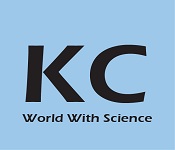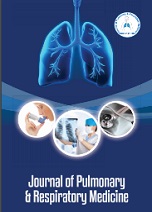Theme: Making Life Better: Fight Against TB And Lung Diseases
Tuberculosis 2018
Conference Series llc LTD heartily invites across the globe to attend World Congress on Advancements in Tuberculosis and lung diseases scheduled during April 22-23, 2019 Tokyo, Japan. This incorporates provoke keynote introductions, Oral talks, Poster introductions and Exhibitions.
Conference Series is an open resource platform that conducts 3000+ global events including International Conferences, Workshops, Symposia, Trade Shows, Exhibitions and Science Congresses in all the major scientific disciplines, including Clinical, Medical, and pharmaceutical, Engineering, Technology, Business Management and Life Sciences across America, Europe, The Middle East, and Asia Pacific.
Why To Attend
Tuberculosis 2019 is one of the important microbiological colloquium that brings together clinicians, researchers, and also other public health planners/association committees or professionals. Tuberculosis research is at its apex, predominantly as discoveries in the lab are being executed into treatments in a more targeted and accurate manner.
Tuberculosis 2019 renders two days of robust deliberation on the methods and strategies which are allied to the symptoms and management of Tuberculosis as well as traverse new ideas and concepts on the global scale to diminish the airborne diseases and also the topics include tuberculosis complications, treatment and therapies for tuberculosis, Advancement in Treatment and Diagnosis, Present framework and risk factor of Tuberculosis, Clinical trials in respiratory diseases, TB Education and Research. The conference invites TB and respiratory surgeons, TB associated camps and all the noteworthy researchers and experts in the field of Infectious Diseases. The conference welcomes the researchers and delegates from TB Health care sectors to the conference for the participation. It aims to expose current and future trends, new techniques, epidemiology’s among peers, speakers, learning space for young researchers, and workshops.
TARGET AUDIENCE
- Leading Scientists
- Practitioners
- Health Care Experts
- Treatment Providers
- Public Health Professionals and Community Health Educators
- Research Scholars and Students
- Tuberculosis and Lung Diseases Associations
- Lung cancer Surgeons
- University Professors
- Lung & respiratory associations and their members
- Tuberculosis Societies and their members
- Founders and Employees of health-related companies
- Experts of TB control Program
- Medicine, TB and Pharma institutes
- Pharma Companies
Track 01: Mycobacterial Infections
Tuberculosis is a chronic inflammatory infectious disease which is caused by the bacteria, Mycobacterium tuberculosis. Tuberculosis generally affects the lungs, but it can also affect other parts of the body. Most infections are asymptomatic, known as latent tuberculosis. About 10% of latent infections progress to active disease, if left untreated, mostly kills about half of those infected. Symptoms of active TB are chronic cough with blood-containing sputum, night sweats, one weight loss and fever. Infection of other organs can cause a wide range of symptoms including bones and joint pains, chest pain, neurological disorders and chronic pulmonary or respiratory distress etc.
Related Conferences:
10th Annual Congress on Pulmonology & Respiratory Medicine Nov 19-20, 2018 | Lisbon, Portugal | Global Congress on Asthma, Allergy and Immunology November 07-08, 2018 Singapore | 6th International Conference on Chronic Obstructive Pulmonary Disease May 17-18, 2018 Tokyo, Japan | 7th International Chronic Obstructive Pulmonary Disease Conference October 22-23, 2018 Rome, Italy | 8th International Congress on Chronic Obstructive Pulmonary Disease (COPD) November 15-16, 2018 Dubai, UAE
Relevant Tuberculosis and Lung Disease Societies:
American Thoracic Society, American Lung Association, European Respiratory Society, American Association for Respiratory Care, British Thoracic Society, Egyptian Society of Chest Diseases and Tuberculosis, National Research Institute of Tuberculosis and Lung Disease (Iran), Egyptian Society of Chest Diseases and Tuberculosis.
Track 02: Epidemiology of the Disease
Tuberculosis epidemiology is the field of science that is concerned with the study of health and disease within populations and the various circumstances that lead to these conditions, with a goal of preventing the spread of disease. One-third of the world's population has been infected with M. tuberculosis. 13.7 million Chronic active cases, were reported by 2007 and 8.8 million new cases were roughly calculated in 2010 and 1.45 million deaths, are frequently noted in developing countries. Out of these, 0.35 million deaths occur in those co-infected with HIV. In 2012, around 450,000 people developed MDR-TB. TB incidence varies with age. In Africa, TB chiefly affects adolescents and young adults. However, in United States, TB has gone from high to low incidence, where TB is mainly a disease of older people, or of the immunosuppressed.
Since 1985, Lung cancer has been the most quotidian cancer in the globe. Worldwide, lung cancer, new cancer diagnosis and cancer fatalities. COPD is the fourth leading cause of death in the United States and is related to age. Lung cancer intensifies with age, especially after age 60. The average age of patients diagnosed with lung cancer is 70 years.
Related Conferences:
10th Annual Congress on Pulmonology & Respiratory Medicine Nov 19-20, 2018 | Lisbon, Portugal | Global Congress on Asthma, Allergy and Immunology November 07-08, 2018 Singapore | 6th International Conference on Chronic Obstructive Pulmonary Disease May 17-18, 2018 Tokyo, Japan | 7th International Chronic Obstructive Pulmonary Disease Conference October 22-23, 2018 Rome, Italy | 8th International Congress on Chronic Obstructive Pulmonary Disease (COPD) November 15-16, 2018 Dubai, UAE
Relevant Tuberculosis and Lung Disease Societies:
American Thoracic Society, American Lung Association, European Respiratory Society, American Association for Respiratory Care, British Thoracic Society, Egyptian Society of Chest Diseases and Tuberculosis, National Research Institute of Tuberculosis and Lung Disease (Iran), Egyptian Society of Chest Diseases and Tuberculosis.
Track 03: Genetics of M. tuberculosis
In 1998, the genome of the H37Rv strain was published. The size of the genome is 4 million base pairs, and has 3959 genes, out of these 40% of genes have their function characterised and another 44% which are hypothesized with possible functions. Six pseudo genes are present within the genome.
Genome contains 250 genes involved in fatty acid metabolism, with 39 of these involved in the polypeptide metabolism generating the waxy coat. Such vast numbers of conserved genes show the revolutionary importance of the waxy coating to pathogen survival.M. tuberculosis can grow on the lipid cholesterol as a sole source of carbon, as genes involved in the cholesterol use pathways that have been important during various stages of the infection with tuberculosis. 10% of the coding genes are taken up by the amino acids that encode acidic, glycine-rich proteins. These proteins have a conserved N-terminal motif, deletion of which leads to impaired growth in granulomas and macrophages.
Related Conferences:
10th Annual Congress on Pulmonology & Respiratory Medicine Nov 19-20, 2018 | Lisbon, Portugal | Global Congress on Asthma, Allergy and Immunology November 07-08, 2018 Singapore | 6th International Conference on Chronic Obstructive Pulmonary Disease May 17-18, 2018 Tokyo, Japan | 7th International Chronic Obstructive Pulmonary Disease Conference October 22-23, 2018 Rome, Italy | 8th International Congress on Chronic Obstructive Pulmonary Disease (COPD) November 15-16, 2018 Dubai, UAE
Relevant Tuberculosis and Lung Disease Societies:
American Thoracic Society, American Lung Association, European Respiratory Society, American Association for Respiratory Care, British Thoracic Society, Egyptian Society of Chest Diseases and Tuberculosis, National Research Institute of Tuberculosis and Lung Disease (Iran), Egyptian Society of Chest Diseases and Tuberculosis.
Track 04: Pulmonary Diseases and Therapeutics
Advanced diagnostic techniques such as X-ray and echocardiography is used to diagnose lung diseases and lung function tests is another test to determine lung cancer disease. This is a medical process involving the pleural cavity and other thoracic internal examination, biopsy and resection of the disease or mass. Thoracoscopy may be sedation under general anesthesia or local anesthesia. Surgical biopsy is a better way to diagnose lung cancer standards. Must wear appropriate masks & monitor exposure and in some working environments it is important to take precautions. Chronic obstructive pulmonary disease is a gradual process that causes difficulties in the death of respiratory failure or its associated lung disease and is the process of stopping smoking.
Related Conferences:
10th Annual Congress on Pulmonology & Respiratory Medicine Nov 19-20, 2018 | Lisbon, Portugal | Global Congress on Asthma, Allergy and Immunology November 07-08, 2018 Singapore | 6th International Conference on Chronic Obstructive Pulmonary Disease May 17-18, 2018 Tokyo, Japan | 7th International Chronic Obstructive Pulmonary Disease Conference October 22-23, 2018 Rome, Italy | 8th International Congress on Chronic Obstructive Pulmonary Disease (COPD) November 15-16, 2018 Dubai, UAE
Relevant Tuberculosis and Lung Disease Societies:
American Thoracic Society, American Lung Association, European Respiratory Society, American Association for Respiratory Care, British Thoracic Society, Egyptian Society of Chest Diseases and Tuberculosis, National Research Institute of Tuberculosis and Lung Disease (Iran), Egyptian Society of Chest Diseases and Tuberculosis.
Track 05: Lung Infection
A Lung infection affects lungs, either in the larger airways or in the smaller air sacs. There is a build-up of pus and fluid, and the airways become swollen, making it difficult to breathe. Chest infections can affect the people of all ages. Young children and the elderly are most at risk, as well as people who are ill and smokers. A chest infection can be serious for these people.
Related Conferences:
10th Annual Congress on Pulmonology & Respiratory Medicine Nov 19-20, 2018 | Lisbon, Portugal | Global Congress on Asthma, Allergy and Immunology November 07-08, 2018 Singapore | 6th International Conference on Chronic Obstructive Pulmonary Disease May 17-18, 2018 Tokyo, Japan | 7th International Chronic Obstructive Pulmonary Disease Conference October 22-23, 2018 Rome, Italy | 8th International Congress on Chronic Obstructive Pulmonary Disease (COPD) November 15-16, 2018 Dubai, UAE
Relevant Tuberculosis and Lung Disease Societies:
American Thoracic Society, American Lung Association, European Respiratory Society, American Association for Respiratory Care, British Thoracic Society, Egyptian Society of Chest Diseases and Tuberculosis, National Research Institute of Tuberculosis and Lung Disease (Iran), Egyptian Society of Chest Diseases and Tuberculosis.
Track 6: Vaccines & Immunization
As of 2011, the only available vaccine is Bacillus Calmette-Guérin , is a vaccine for tuberculosis disease. Many people have been BCG-vaccinated. BCG is primarily used as a vaccine in many countries which is a high aid for preventing TB as childhood tuberculous meningitis and miliary disease. Tuberculosis can be treated by taking several drugs for 6 to 9 months. There are 10 drugs which are presently approved by FDA for treating TB. Out of the approved drugs, the first-line anti-TB agents that form the basis of treatment regimens include: isoniazid, pyrazinamide rifampin, ethambutol, streptomycin. Once the TB patient is known to be fully susceptible to ethambutol or streptomycin, it can be discontinued.
Directly observed therapy (DOT) is mainly recommended for all the patients. With DOT treatment, patients with the above regimens can shift to 2 to 3 times per week dosage after an initial 2 weeks of daily dosing. Patients on twice-weekly dosing should not miss any doses. Require daily therapy for patients on self-administered medication.
Related Conferences:
10th Annual Congress on Pulmonology & Respiratory Medicine Nov 19-20, 2018 | Lisbon, Portugal | Global Congress on Asthma, Allergy and Immunology November 07-08, 2018 Singapore | 6th International Conference on Chronic Obstructive Pulmonary Disease May 17-18, 2018 Tokyo, Japan | 7th International Chronic Obstructive Pulmonary Disease Conference October 22-23, 2018 Rome, Italy | 8th International Congress on Chronic Obstructive Pulmonary Disease (COPD) November 15-16, 2018 Dubai, UAE
Relevant Tuberculosis and Lung Disease Societies:
American Thoracic Society, American Lung Association, European Respiratory Society, American Association for Respiratory Care, British Thoracic Society, Egyptian Society of Chest Diseases and Tuberculosis, National Research Institute of Tuberculosis and Lung Disease (Iran), Egyptian Society of Chest Diseases and Tuberculosis.
Track 7: TB Clinical Trials
Clinical trials are concerned with diagnosis and treatment of the disease. The development of drug-resistant TB (XDR-TB) and multidrug-resistant TB (MDR-TB) are extensively a rising global health problem. A recent advance in the progress of new drugs & regimens provides hope that may be well effective, tolerated and shorter-duration treatment for tuberculosis will become available. During clinical trials they promote research within local TB control programs through association on clinical research of importance to public health settings, and to provide a platform for international collective research of consequence to both domestic and universal TB control.
Rapid urine-based screening for Tuberculosis in hospitalised patients in Africa to reduce AIDS-related mortality. Thibela TB is the mass screening and treatment plan in mining communities, The ZAMSTAR trial is the community TB testing and counselling, Diabetes correlated with increased risk of TB in the United Kingdom are some of the latest clinical trials or the projects going-on to reduce the risk of Tuberculosis.
Related Conferences:
10th Annual Congress on Pulmonology & Respiratory Medicine Nov 19-20, 2018 | Lisbon, Portugal | Global Congress on Asthma, Allergy and Immunology November 07-08, 2018 Singapore | 6th International Conference on Chronic Obstructive Pulmonary Disease May 17-18, 2018 Tokyo, Japan | 7th International Chronic Obstructive Pulmonary Disease Conference October 22-23, 2018 Rome, Italy | 8th International Congress on Chronic Obstructive Pulmonary Disease (COPD) November 15-16, 2018 Dubai, UAE
Relevant Tuberculosis and Lung Disease Societies:
American Thoracic Society, American Lung Association, European Respiratory Society, American Association for Respiratory Care, British Thoracic Society, Egyptian Society of Chest Diseases and Tuberculosis, National Research Institute of Tuberculosis and Lung Disease (Iran), Egyptian Society of Chest Diseases and Tuberculosis.
Track 8: Resistance to TB Drugs
Multidrug-resistant TB (MDR-TB) begins when an antibiotic fails to eradicate all the bacteria that it targets, with the surviving bacteria producing resistance to that antibiotic and usually others at the same time. Primary Multidrug resistant, MDR-TB occurs in patients who was not earlier been infected with TB but who became infected with a strain which is resistant to the treatment. Acquired multidrug resistance for TB occurs in patients during treatment with a drug regimen that is not competent of killing the particular strain of TB with which they have been infected. MDR-TB requires treatment with second-line drugs, often four or more anti-TB drugs for a minimum of 6 months and a maximum for 18–24 months, if rifampin resistance has been identified in the specific strain of TB with which the patient has been infected. Under ideal program conditions, MDR-TB cure rates can approach 70%. In general, second-line drugs are less effective, more toxic and much more expensive than first-line drugs.
Related Conferences:
10th Annual Congress on Pulmonology & Respiratory Medicine Nov 19-20, 2018 | Lisbon, Portugal | Global Congress on Asthma, Allergy and Immunology November 07-08, 2018 Singapore | 6th International Conference on Chronic Obstructive Pulmonary Disease May 17-18, 2018 Tokyo, Japan | 7th International Chronic Obstructive Pulmonary Disease Conference October 22-23, 2018 Rome, Italy | 8th International Congress on Chronic Obstructive Pulmonary Disease (COPD) November 15-16, 2018 Dubai, UAE
Relevant Tuberculosis and Lung Disease Societies:
American Thoracic Society, American Lung Association, European Respiratory Society, American Association for Respiratory Care, British Thoracic Society, Egyptian Society of Chest Diseases and Tuberculosis, National Research Institute of Tuberculosis and Lung Disease (Iran), Egyptian Society of Chest Diseases and Tuberculosis.
Track 9: TB Co-Infections
TB and HIV co-infection is that where people have both, either latent or active TB disease and also HIV infection. In addition to HIV infection is speeding up the progress from latent TB infection to active TB disease, in accordance TB bacteria also enhance the progression of HIV infection. Than many other opportunistic infections, TB occurs earlier in the course of HIV infection. In co-infected individuals, the risk of death is also twice that of HIV infected individuals without TB, even when antiretroviral therapy and CD4 cell count are taken into account. The provision of anti TB drug therapy and HIV antiretroviral treatment at the same time involves a number of potential difficulties including: A high pill burden, Drug – drug interactions, Cumulative drug toxicities.
TB and Diabetes co-infection: Poorly controlled diabetes can lead to numerous complications, including neuropathy, vascular disease, and increased susceptibility to infection. Diabetes may also lead to increased susceptibility to the disease via multiple mechanisms that are caused by M. tuberculosis.
There are even other co-infections with Tuberculosis such as malaria, Typhoid fever, Dengue, hepatitis.
Related Conferences:
10th Annual Congress on Pulmonology & Respiratory Medicine Nov 19-20, 2018 | Lisbon, Portugal | Global Congress on Asthma, Allergy and Immunology November 07-08, 2018 Singapore | 6th International Conference on Chronic Obstructive Pulmonary Disease May 17-18, 2018 Tokyo, Japan | 7th International Chronic Obstructive Pulmonary Disease Conference October 22-23, 2018 Rome, Italy | 8th International Congress on Chronic Obstructive Pulmonary Disease (COPD) November 15-16, 2018 Dubai, UAE
Relevant Tuberculosis and Lung Disease Societies:
American Thoracic Society, American Lung Association, European Respiratory Society, American Association for Respiratory Care, British Thoracic Society, Egyptian Society of Chest Diseases and Tuberculosis, National Research Institute of Tuberculosis and Lung Disease (Iran), Egyptian Society of Chest Diseases and Tuberculosis.
Track 10: TB diagnosis/ Prevention & Treatment
TB diagnosis includes microbiological studies such as sputum, alternative sampling, PCR. Immunological test involves ALS assay, transdermal patch, tuberculin skin test, mantoux skin test, heaf test, CDC classification of tuberculin reaction, BCG vaccine and tuberculin skin test, Adenosine deaminase, Nucleic acid amplification tests (NAAT), Full blood count & Interferon-? release assays.
TB prevention and control efforts depend primarily on the vaccination of infants and the detection & treatment of active cases. The World Health Organization (WHO) has achieved some success with rapid diagnostics and improved treatment regimens. US Preventive Services Task Force (USPSTF) endorses screening those who are at high risk for latent tuberculosis with either mantoux tuberculin skin tests or interferon- release assays. Prevention of TB consists of two main parts. The first part of preventing TB is to cease the transmission of tuberculosis from one person to another. This can be done firstly, by identifying people with active TB infection, and then curing them by providing the drug treatment. With the provision of proper TB therapy someone with TB will not be infectious very quickly, and so cannot spread the disease to others. The second main part of preventing TB is to prevent people with latent TB infection from developing active infectious TB disease.
Related Conferences:
10th Annual Congress on Pulmonology & Respiratory Medicine Nov 19-20, 2018 | Lisbon, Portugal | Global Congress on Asthma, Allergy and Immunology November 07-08, 2018 Singapore | 6th International Conference on Chronic Obstructive Pulmonary Disease May 17-18, 2018 Tokyo, Japan | 7th International Chronic Obstructive Pulmonary Disease Conference October 22-23, 2018 Rome, Italy | 8th International Congress on Chronic Obstructive Pulmonary Disease (COPD) November 15-16, 2018 Dubai, UAE
Relevant Tuberculosis and Lung Disease Societies:
American Thoracic Society, American Lung Association, European Respiratory Society, American Association for Respiratory Care, British Thoracic Society, Egyptian Society of Chest Diseases and Tuberculosis, National Research Institute of Tuberculosis and Lung Disease (Iran), Egyptian Society of Chest Diseases and Tuberculosis.
Track 11: Zoonotic TB
Mycobacterium bovis is the main causative agent of bovine tuberculosis (BTB) that causes zoonotic tuberculosis (TB) in humans. Bovine TB is mostly acquired from domestic animals and their products, in which cattle’s are the major reservoir. The disease results in huge economic loss, particularly in urban and per-urban cross breed dairy cattle due to mortality, low productivity and carcass condemnation as well as trade restrictions of live animals, products and by products of animals. To prevent and control zoonotic TB, veterinary sectors must be cross sectored in controlling the disease in its animal reservoir, developing diagnostic tools for diagnosingM. bovis, strengthening surveillance systems and assessing economic impact.
Related Conferences:
10th Annual Congress on Pulmonology & Respiratory Medicine Nov 19-20, 2018 | Lisbon, Portugal | Global Congress on Asthma, Allergy and Immunology November 07-08, 2018 Singapore | 6th International Conference on Chronic Obstructive Pulmonary Disease May 17-18, 2018 Tokyo, Japan | 7th International Chronic Obstructive Pulmonary Disease Conference October 22-23, 2018 Rome, Italy | 8th International Congress on Chronic Obstructive Pulmonary Disease (COPD) November 15-16, 2018 Dubai, UAE
Relevant Tuberculosis and Lung Disease Societies:
American Thoracic Society, American Lung Association, European Respiratory Society, American Association for Respiratory Care, British Thoracic Society, Egyptian Society of Chest Diseases and Tuberculosis, National Research Institute of Tuberculosis and Lung Disease (Iran), Egyptian Society of Chest Diseases and Tuberculosis.
Track 12: Lung Cancer
Lung cancer is currently the leading cause of cancer-related deaths in men and women in the world. Lung cancer-related trends have been mainly related to smoking over the past several decades. In 2015, the American Cancer Society handles 221,200 new cases, diagnosed as 158,040 deaths due only to lung cancer. Risk factors for lung cancer are primarily smoking and air pollution. According to the doctor's suggestion, there are no symptoms associated with the first stage of lung cancer. According to researchers' research, lung cancer mortality rate is not improved at the time of diagnosis and most lung cancer progresses to advanced stage.
Related Conferences:
10th Annual Congress on Pulmonology & Respiratory Medicine Nov 19-20, 2018 | Lisbon, Portugal | Global Congress on Asthma, Allergy and Immunology November 07-08, 2018 Singapore | 6th International Conference on Chronic Obstructive Pulmonary Disease May 17-18, 2018 Tokyo, Japan | 7th International Chronic Obstructive Pulmonary Disease Conference October 22-23, 2018 Rome, Italy | 8th International Congress on Chronic Obstructive Pulmonary Disease (COPD) November 15-16, 2018 Dubai, UAE
Relevant Tuberculosis and Lung Disease Societies:
American Thoracic Society, American Lung Association, European Respiratory Society, American Association for Respiratory Care, British Thoracic Society, Egyptian Society of Chest Diseases and Tuberculosis, National Research Institute of Tuberculosis and Lung Disease (Iran), Egyptian Society of Chest Diseases and Tuberculosis.
Track 13: COPD
COPD is a disease involving airway inflammation and thickening. It also involves the destruction of oxygen-exchanged lung tissue. The Global Initiative for Chronic Obstructive Pulmonary Disease is described as "preventable and treatable disease, characterized by an incompletely reversible airflow limitation, which is usually progressive and is associated with an abnormal inflammatory response to harmful particles or gases. This gradual and relentless loss of lung disease is caused by emphysema caused by the destruction of the lung parenchyma. Smoking (long term smokers), chronic bronchitis, genetic factors (genes) and due to chronic inflammation and fibrosis as well as elasticity The resulting loss of small airway narrows, which leads to gradual airflow limitation, air capture, and further shortages of breathing in motion.
Related Conferences:
10th Annual Congress on Pulmonology & Respiratory Medicine Nov 19-20, 2018 | Lisbon, Portugal | Global Congress on Asthma, Allergy and Immunology November 07-08, 2018 Singapore | 6th International Conference on Chronic Obstructive Pulmonary Disease May 17-18, 2018 Tokyo, Japan | 7th International Chronic Obstructive Pulmonary Disease Conference October 22-23, 2018 Rome, Italy | 8th International Congress on Chronic Obstructive Pulmonary Disease (COPD) November 15-16, 2018 Dubai, UAE
Relevant Tuberculosis and Lung Disease Societies:
American Thoracic Society, American Lung Association, European Respiratory Society, American Association for Respiratory Care, British Thoracic Society, Egyptian Society of Chest Diseases and Tuberculosis, National Research Institute of Tuberculosis and Lung Disease (Iran), Egyptian Society of Chest Diseases and Tuberculosis.
Track 14: Asthma & Pneumonia
Asthma is a chronic disease that makes lungs harder and affects the airways that carry air to and from the lung which leads to swelling or inflammation of the airway wall. This swelling or inflammation makes the airways extremely sensitive to irritations and increases your susceptibility to an allergic reaction. As inflammation causes the airways to become narrower, less air can pass through them, both to and from the lungs which makes difficult to breathe. Thus the patience suffers from symptoms like wheezing (a hissing sound while breathing), chest tightness, breathing problems, and coughing.
Related Conferences:
10th Annual Congress on Pulmonology & Respiratory Medicine Nov 19-20, 2018 | Lisbon, Portugal | Global Congress on Asthma, Allergy and Immunology November 07-08, 2018 Singapore | 6th International Conference on Chronic Obstructive Pulmonary Disease May 17-18, 2018 Tokyo, Japan | 7th International Chronic Obstructive Pulmonary Disease Conference October 22-23, 2018 Rome, Italy | 8th International Congress on Chronic Obstructive Pulmonary Disease (COPD) November 15-16, 2018 Dubai, UAE
Relevant Tuberculosis and Lung Disease Societies:
American Thoracic Society, American Lung Association, European Respiratory Society, American Association for Respiratory Care, British Thoracic Society, Egyptian Society of Chest Diseases and Tuberculosis, National Research Institute of Tuberculosis and Lung Disease (Iran), Egyptian Society of Chest Diseases and Tuberculosis.
Track 15: Sarcoidosis
Sarcoidosis is the growth of tiny collections of inflammatory cells (granulomas) in different parts of your body — most commonly the lungs, lymph nodes, eyes and skin.Doctors believe sarcoidosis results from the body's immune system responding to an unknown substance, most likely something inhaled from the air.There is no cure for sarcoidosis, but most people do very well with little or only modest treatment. In half of cases, sarcoidosis goes away on its own. In a few cases, however, sarcoidosis may last for years and may cause organ damage. Lung symptoms--Many patients with sarcoidosis experience lung problems, which may include : persistent dry cough, shortness of breath, wheezing, chest pain.
Related Conferences:
10th Annual Congress on Pulmonology & Respiratory Medicine Nov 19-20, 2018 | Lisbon, Portugal | Global Congress on Asthma, Allergy and Immunology November 07-08, 2018 Singapore | 6th International Conference on Chronic Obstructive Pulmonary Disease May 17-18, 2018 Tokyo, Japan | 7th International Chronic Obstructive Pulmonary Disease Conference October 22-23, 2018 Rome, Italy | 8th International Congress on Chronic Obstructive Pulmonary Disease (COPD) November 15-16, 2018 Dubai, UAE
Relevant Tuberculosis and Lung Disease Societies:
American Thoracic Society, American Lung Association, European Respiratory Society, American Association for Respiratory Care, British Thoracic Society, Egyptian Society of Chest Diseases and Tuberculosis, National Research Institute of Tuberculosis and Lung Disease (Iran), Egyptian Society of Chest Diseases and Tuberculosis.
Track 16: Lymphangioleiomyomatosis
Lymphangioleiomyomatosis (LAM) is a rare, progressive and systemic disease that typically results in cystic lung destruction. It predominantly affects women, especially during childbearing years. The term sporadic LAM is used for patients with LAM not associated with tuberous sclerosis complex (TSC), while TSC-LAM refers to LAM that is associated with TSC. The condition is often misdiagnosed as asthma or chronic obstructive pulmonary disease. The first pneumothorax precedes the diagnosis of LAM in 82% of patients. The consensus clinical definition of LAM includes multiple symptoms : Fatigue, Cough, Haemoptysis, Chest pain, Chylous complications arising from lymphatic obstruction.
Related Conferences:
10th Annual Congress on Pulmonology & Respiratory Medicine Nov 19-20, 2018 | Lisbon, Portugal | Global Congress on Asthma, Allergy and Immunology November 07-08, 2018 Singapore | 6th International Conference on Chronic Obstructive Pulmonary Disease May 17-18, 2018 Tokyo, Japan | 7th International Chronic Obstructive Pulmonary Disease Conference October 22-23, 2018 Rome, Italy | 8th International Congress on Chronic Obstructive Pulmonary Disease (COPD) November 15-16, 2018 Dubai, UAE
Relevant Tuberculosis and Lung Disease Societies:
American Thoracic Society, American Lung Association, European Respiratory Society, American Association for Respiratory Care, British Thoracic Society, Egyptian Society of Chest Diseases and Tuberculosis, National Research Institute of Tuberculosis and Lung Disease (Iran), Egyptian Society of Chest Diseases and Tuberculosis.
Track 17: Asbestosis
Asbestosis is long term inflammation and scarring of the lungs due to asbestos. Symptoms may include shortness of breath, cough, wheezing, and chest pain. Complications may include lung cancer, mesothelioma, and pulmonary heart disease. There is no specific treatment. Recommendations may include influenza vaccination, pneumococcal vaccination, oxygen therapy, and stopping smoking. Asbestosis affected about 157,000 people and resulted in 3,6000 deaths in 2015. Asbestos use has been banned in a number of countries in an effort to prevent disease.
Related Conferences:
10th Annual Congress on Pulmonology & Respiratory Medicine Nov 19-20, 2018 | Lisbon, Portugal | Global Congress on Asthma, Allergy and Immunology November 07-08, 2018 Singapore | 6th International Conference on Chronic Obstructive Pulmonary Disease May 17-18, 2018 Tokyo, Japan | 7th International Chronic Obstructive Pulmonary Disease Conference October 22-23, 2018 Rome, Italy | 8th International Congress on Chronic Obstructive Pulmonary Disease (COPD) November 15-16, 2018 Dubai, UAE
Relevant Tuberculosis and Lung Disease Societies:
American Thoracic Society, American Lung Association, European Respiratory Society, American Association for Respiratory Care, British Thoracic Society, Egyptian Society of Chest Diseases and Tuberculosis, National Research Institute of Tuberculosis and Lung Disease (Iran), Egyptian Society of Chest Diseases and Tuberculosis.
Scope:
The scope of TB & lung research involves advancing molecular techniques for prognosis of even very minute levels of the organism which eventually contributes to the more affordable molecular tests or next-generation inspection for latent/ Active TB or MDR-TB and in turn this is related to the advancement and safety of public health. The perception behind the world congress is to build a worldwide stage for pulmonologist, Lung care and TB specialists and analysts from widely acclaimed foundations to share and trade new clinical examinations and progress in dealing with respiratory diseases. The scientific conferences comprise oral and poster presentations, seminars, and workshops from the professionals endeavouring within the line of medicine.
TB incidence in Japan the number of new TB cases noticed stood at 25,311 in 2007, a drop of 1,073 from the previous year. TB took the lives of 2,188 people in 2007, 81 fewer than in 2006. But it must be remember that TB is still a consequential epidemic disease in this country in terms of the number of new cases. Japan’s TB incidence — 19.8 cases per 100,000 people in 2007 — are the highest among developed countries: 4.5 times more than in Canada, 4.4 times more than in the United States and 3.7 times more than in Sweden.
Most TB cases in Japan involve people aged 70 and above, who were infected when young. They tend to be gaga or suffer from other diseases like diabetes. A system should be developed to discern and treat such TB cases at an prior stage.
Major Funding Bodies for TB & Lung Research around the Globe:
Biotechnology and Biological Sciences Research Council
Bill & Melinda Gates Foundation
https://www.gatesfoundation.org/
The Royal Society
The Gatsby Charitable Foundation
European Molecular Biology Organisation
European Research Council
European Science Foundation
Public health agency of Canada
https://www.canada.ca/en/public-health.html
Stop TB Partnership
World Health Organization
Future Prospects:
The evolution of global TB control policies, including DOTS and the Stop TB Strategy, and assess whether the challenges and impediments faced by the public health community worldwide in developing and implementing this strategy can support future action towards the eradication of TB. Research in TB diagnosis and peritoneum genomics is concentrate on the cellular and genetic control of TB & lung cancer. Complexities ensue due to various associated infections and disease conditions; there is a raging need for further research in the field. Be it the better medication and care or preferable resistance management, proper diagnostics persists the key to success. The development of drug-resistant TB (XDR-TB) and multidrug-resistant TB are enormously rising global health problem. A recent advance in the progress of new drugs & regimens provides hope that may be well efficacious, condoned and shorter-span treatment for tuberculosis will become obtainable.
Major challenges for the next decade include:
- Mass screening and treatment strategy in mining communities
- Managing drug-resistant tuberculosis, Lung cancer, asthma and pneumonia in children
- Traversing of private-public sector in association to manage respiratory infections.
- The Immune Reconstitution Inflammatory Syndrome (IRIS)
- Research into efficacy of programmes and means of collaboration with HIV/AIDS programmes.
- Primacy research in the area of TB treatment for people living with HIV.
- Testing and Development of new drugs, with shorter durations of treatment.
- Improvement for cheap, easily applied diagnostic methods
- Prospects for new anti-tubercular agents and vaccines
- Prevention of risk factors and side effects
- A moderately resourced, well organised tuberculosis programme should be a primacy in developing and developed countries.
- Effective and preventive therapy for drug resistance patients.
- Examining ways of improving harmony with treatment among doctors and patients.
- Further traversing of public-private sector partnerships in managing Asthma, pneumonia and tuberculosis.
- Develop and validate biomarkers and proxy endpoints which predict efficiency and thereby shorten clinical trial duration.
Conference Highlights
- Mycobacterial Infections
- Epidemiology of the Disease
- Genetics of M. tuberculosis
- Pulmonary Diseases and Therapeutics
- Lung infection
- Vaccines & Immunization
- TB Clinical Trials
- Resistance to TB Drugs
- TB Co-infections
- TB diagnosis/ Prevention & Treatment
- Zoonotic TB
- Lung Cancer
- COPD
- Asthma & Pneumonia
- Sarcoidosis
- Lymphangioleiomyomatosis
- Asbestosis
To share your views and research, please click here to register for the Conference.
To Collaborate Scientific Professionals around the World
| Conference Date | April 22-23, 2019 | ||
| Sponsors & Exhibitors |
|
||
| Speaker Opportunity Closed | |||
| Poster Opportunity Closed | Click Here to View | ||
Useful Links
Special Issues
All accepted abstracts will be published in respective Our International Journals.
- Journal of Infectious Diseases & Therapy
- Journal of Pulmonary & Respiratory Medicine
- Journal of Tuberculosis and Therapeutics
Abstracts will be provided with Digital Object Identifier by






















